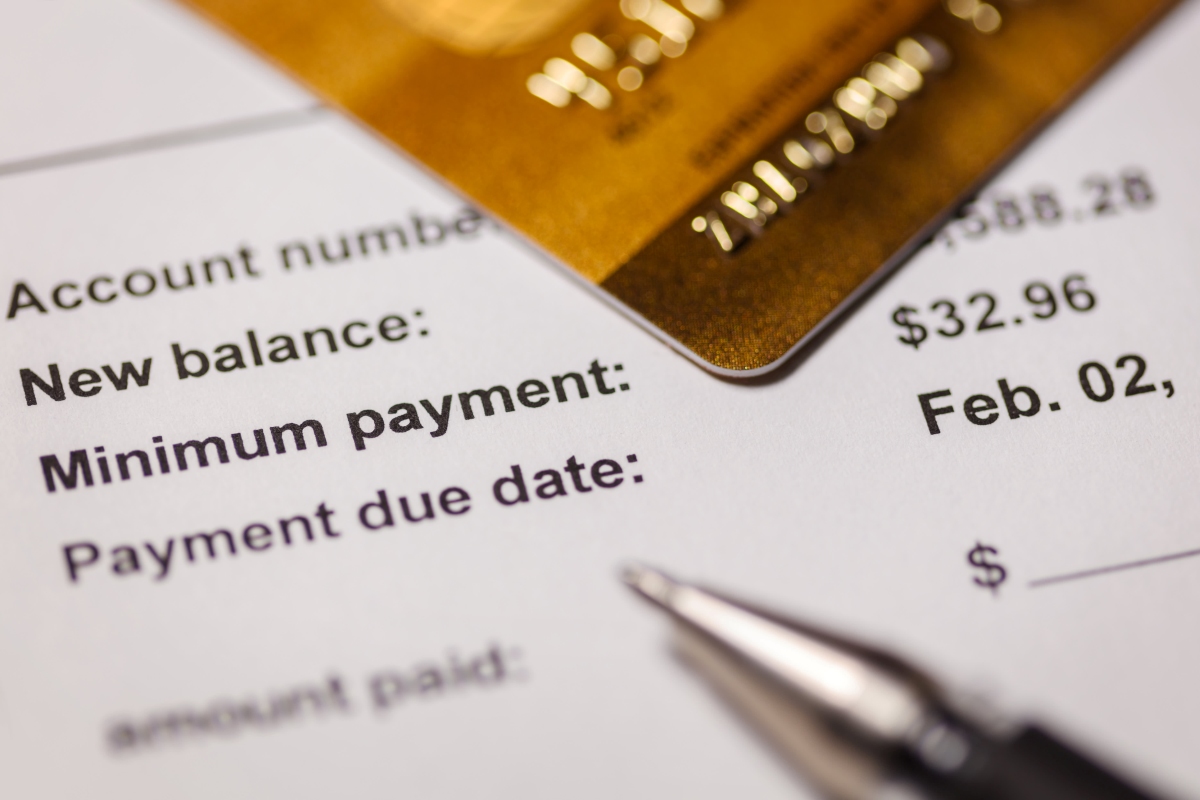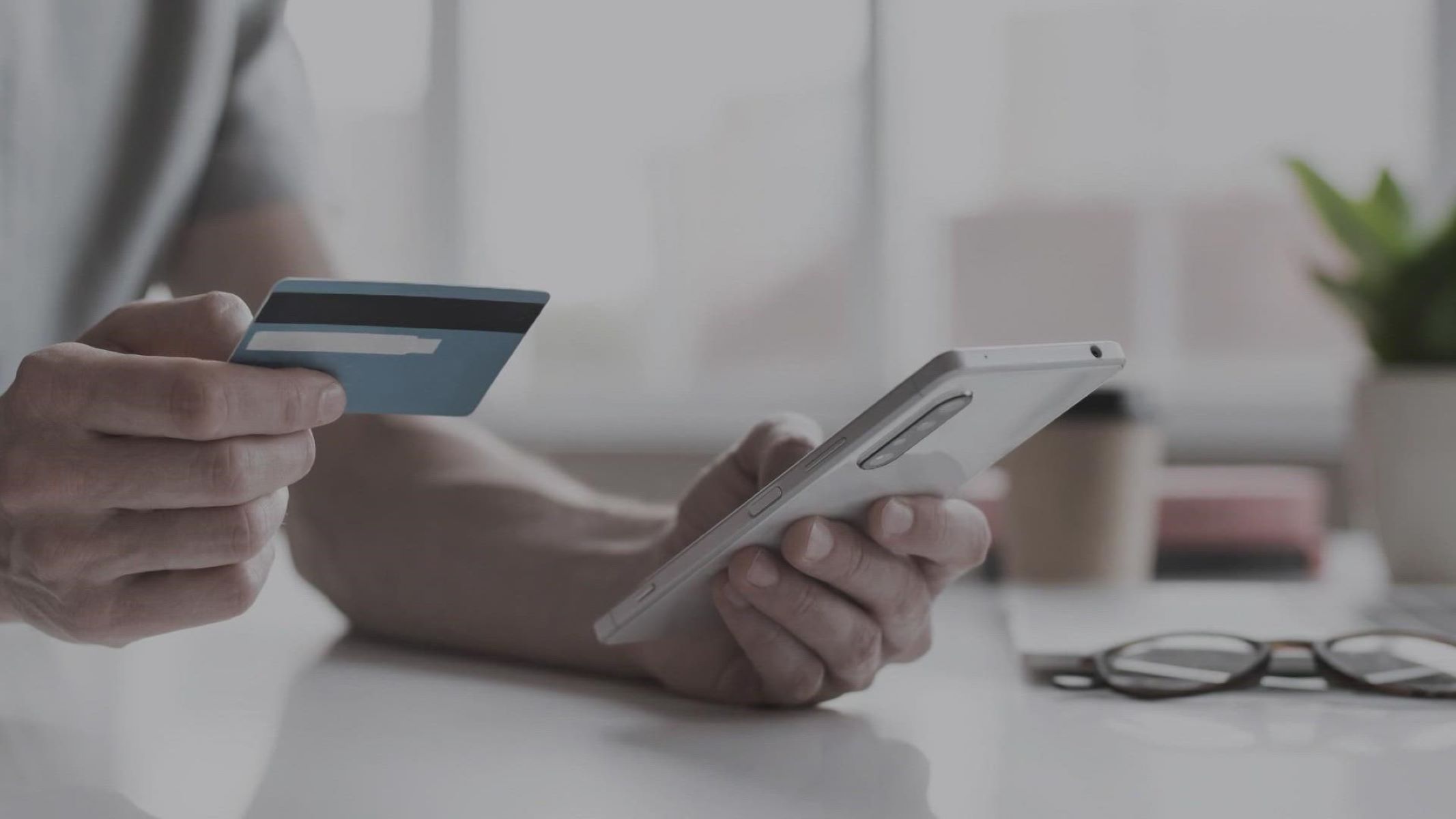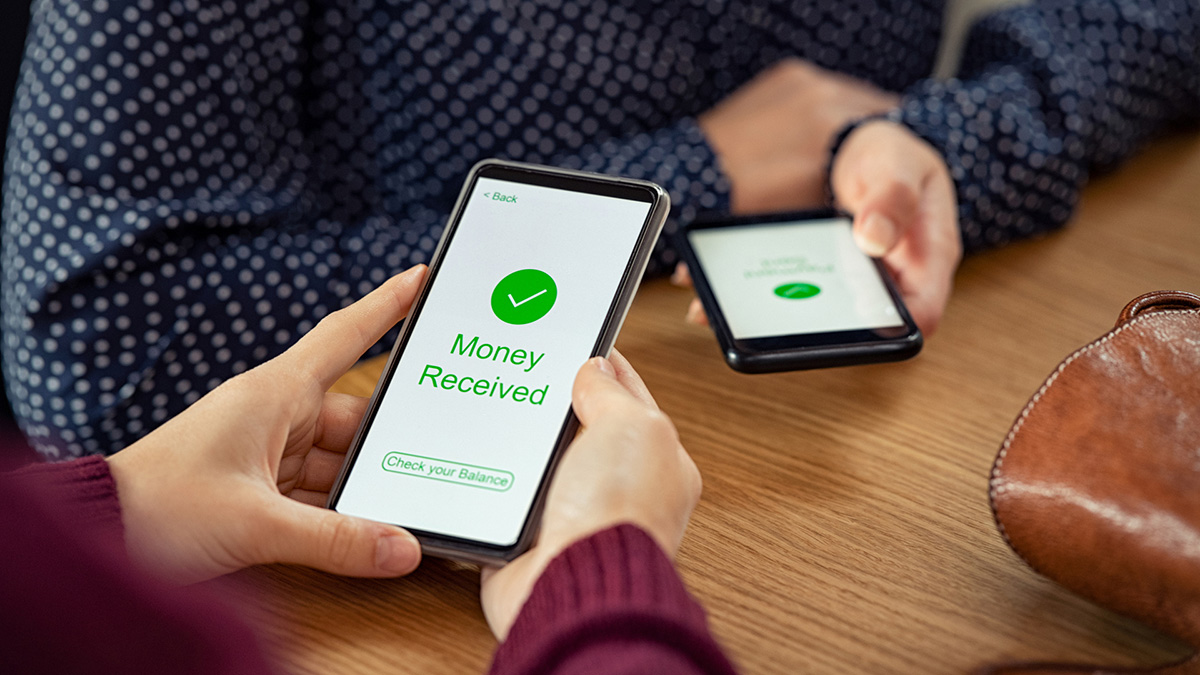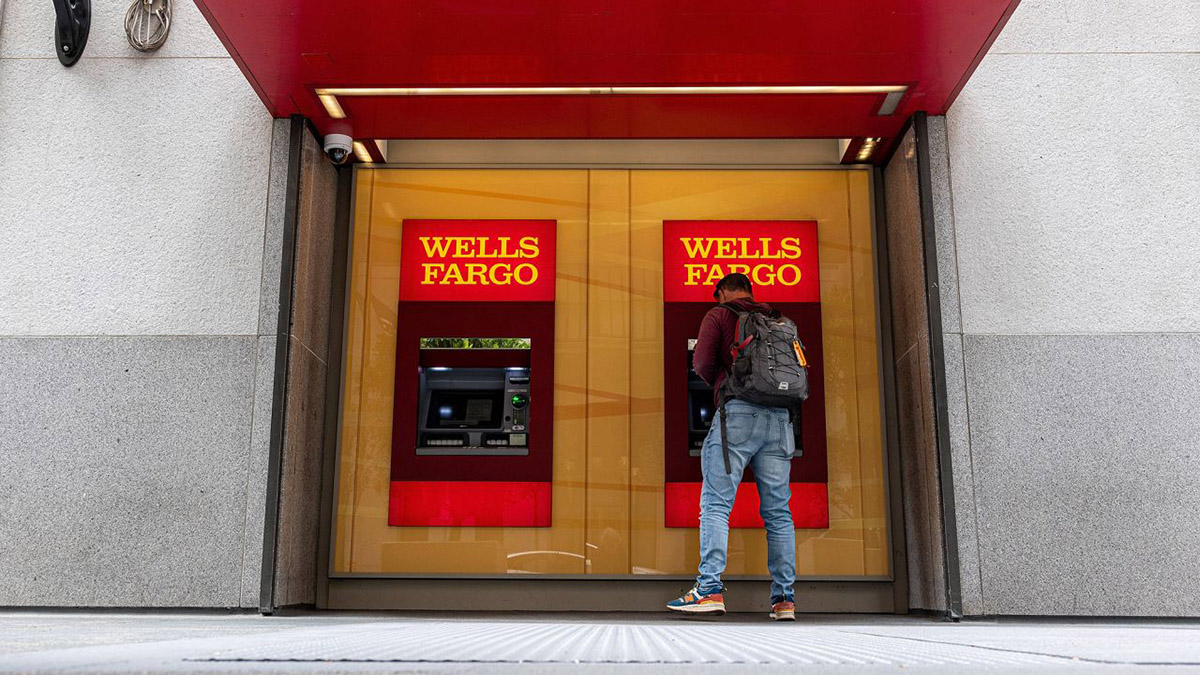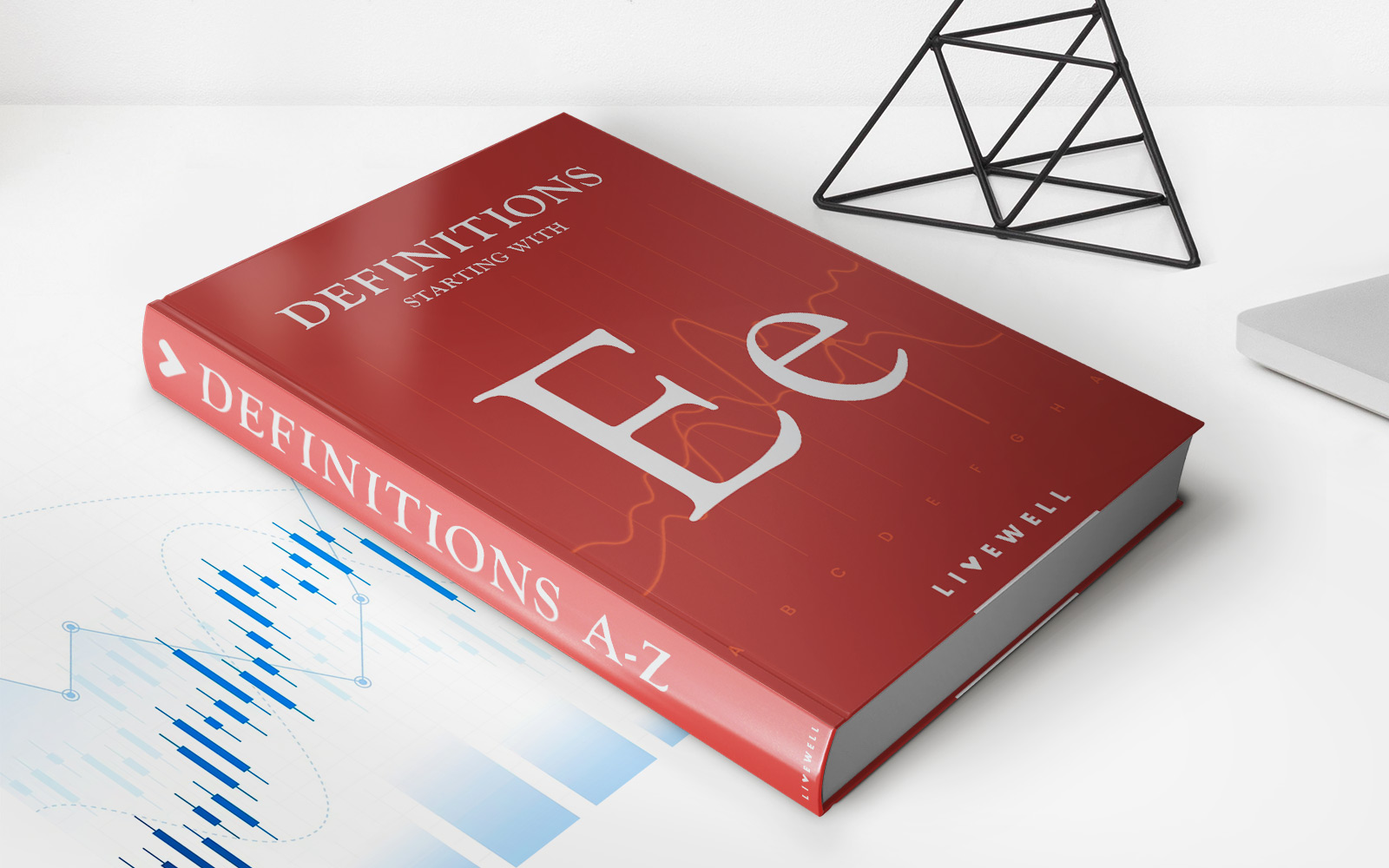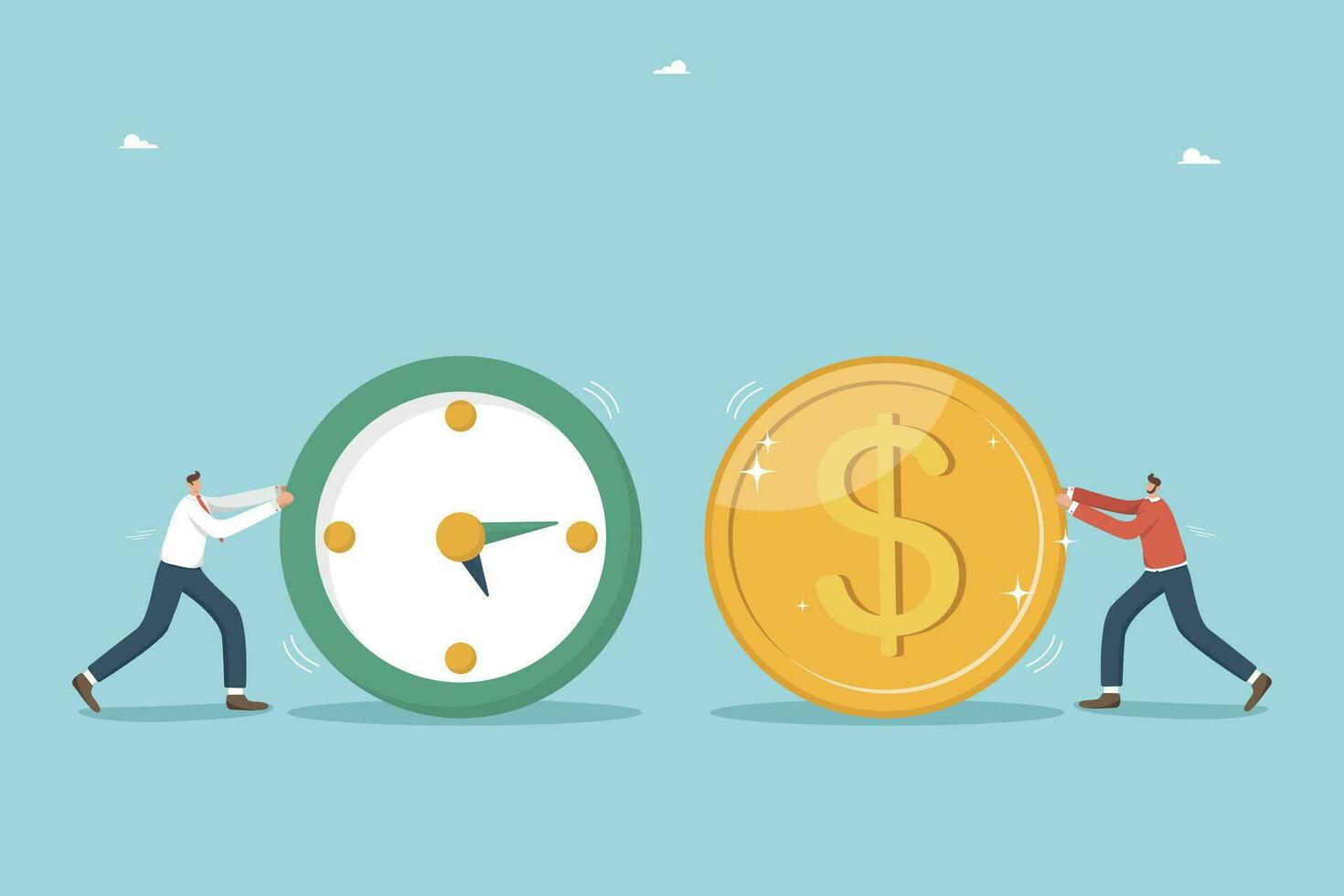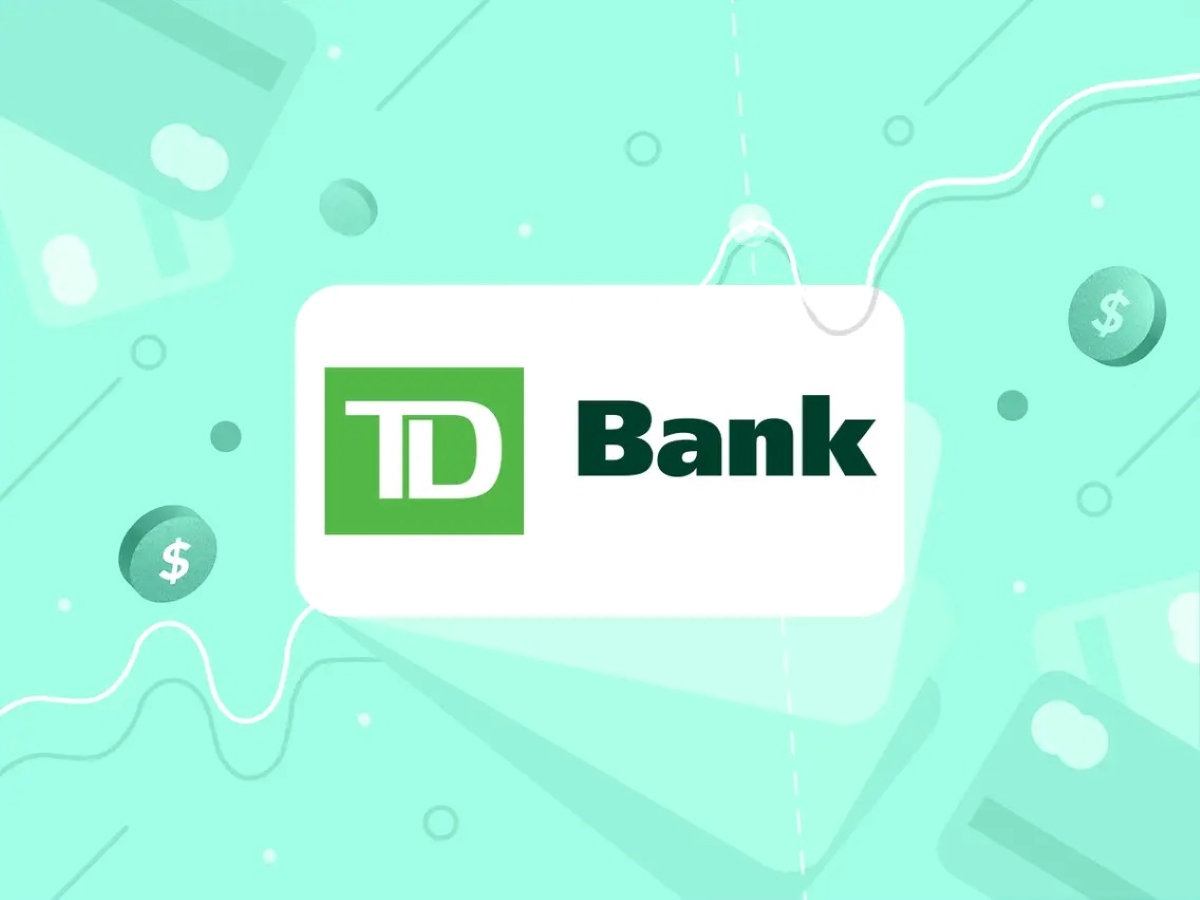

Finance
How To Pay Off 20000 In Credit Card Debt
Modified: March 3, 2024
Learn effective strategies and tips to pay off $20,000 in credit card debt with our comprehensive finance guide. Take control of your finances and start your journey towards financial freedom.
(Many of the links in this article redirect to a specific reviewed product. Your purchase of these products through affiliate links helps to generate commission for LiveWell, at no extra cost. Learn more)
Table of Contents
- Introduction
- Step 1: Assess Your Debt
- Step 2: Create a Budget
- Step 3: Minimize Expenses
- Step 4: Increase Your Income
- Step 5: Prioritize Your Debts
- Step 6: Negotiate with Creditors
- Step 7: Consider Debt Consolidation
- Step 8: Explore Balance Transfer Options
- Step 9: Seek Professional Help
- Step 10: Stay Committed and Track Progress
- Conclusion
Introduction
Dealing with credit card debt can be a stressful and overwhelming experience. If you find yourself with $20,000 in credit card debt, it’s important to take action and develop a plan to pay it off. The good news is that with the right strategies and a solid commitment, you can regain control of your finances and become debt-free.
In this article, we will explore ten steps to help you pay off your $20,000 credit card debt. From assessing your debt to seeking professional help, each step is designed to provide practical guidance and support along your journey to financial freedom.
Before we delve into the steps, it’s essential to acknowledge the importance of a positive mindset. Paying off a significant debt requires dedication, discipline, and a willingness to make financial sacrifices. It may not be an easy journey, but with determination and a clear plan, it is entirely achievable.
Remember, paying off your credit card debt is not just about eliminating the financial burden. It’s also about building financial security and creating a foundation for a brighter future. By tackling your debt head-on, you can pave the way for better financial habits and a stronger financial standing.
So, without further ado, let’s dive into the ten steps that will help you pay off your $20,000 in credit card debt and embark on a journey towards a debt-free existence.
Step 1: Assess Your Debt
Before you can develop a plan to pay off your $20,000 credit card debt, you need to have a clear understanding of your financial situation. Start by gathering all your credit card statements and any other relevant documentation.
Take a careful look at each credit card and note down the outstanding balance, interest rate, minimum payment, and any additional fees or charges. This will give you a comprehensive overview of the total amount you owe and the potential costs associated with it.
Next, calculate the total amount of interest you are paying each month. This can be eye-opening and motivating, as it highlights the financial drain that debt can have on your budget. Knowing how much interest you are paying will also serve as a valuable reminder of why it’s essential to pay off your debts as soon as possible.
Once you have a clear understanding of your debt, consider creating a debt repayment spreadsheet or using a debt management app to help you organize your information. This will allow you to track your progress and make adjustments to your repayment plan as needed.
Remember that assessing your debt is not just about the numbers. It’s also an opportunity to reflect on your spending habits and financial behaviors that may have contributed to your current situation. Understanding the underlying causes of your debt can help you make necessary changes and avoid falling back into a cycle of overspending.
Additionally, as you assess your debt, take into account any other financial obligations you have, such as student loans or a mortgage. Consider how these factors may impact your ability to pay off your credit card debt and adjust your repayment plan accordingly.
Assessing your debt may initially feel overwhelming, but it’s an essential first step in gaining control of your financial situation. By taking the time to evaluate your debt comprehensively, you’ll be better equipped to develop an effective plan to pay off your $20,000 credit card debt.
Step 2: Create a Budget
Creating a budget is a crucial step in paying off your $20,000 credit card debt. A budget helps you understand your income, expenses, and where your money is going each month. By carefully analyzing your finances and allocating your resources effectively, you can free up additional funds to put towards your debt repayment.
Start by listing all your sources of income, including your salary, freelance work, or any other sources of revenue. Next, track your expenses over the course of a month. This will give you a clear picture of how much you’re spending and where your money is being allocated.
When creating your budget, be as detailed as possible. Categorize your expenses into essential and non-essential items. Essential expenses include housing, transportation, utilities, groceries, and debt payments. Non-essential expenses encompass things like dining out, entertainment, and impulse purchases.
Identify areas where you can cut back or make adjustments to free up more money for debt repayment. This may involve making sacrifices, such as reducing your discretionary spending or finding ways to save on essential expenses. For example, consider cooking meals at home instead of eating out or downgrading to a more affordable cell phone plan.
As you create your budget, make sure to allocate a specific amount towards debt repayment each month. Determine the maximum amount you can comfortably afford to pay towards your credit card debt while still meeting your other financial obligations.
Stick to your budget diligently and track your expenses regularly. There are numerous online tools and smartphone apps available to help you manage your budget effectively. By staying accountable and adhering to your budget, you’ll have a clear roadmap to follow on your journey towards paying off your $20,000 credit card debt.
Remember, budgeting isn’t about depriving yourself of all enjoyment. It’s about making strategic choices to prioritize your financial goals and allocate your resources wisely. Paying off your debt may require temporary sacrifices, but the long-term financial freedom and peace of mind will make it well worth the effort.
Step 3: Minimize Expenses
Reducing your expenses is a crucial step in paying off your $20,000 credit card debt. By identifying areas where you can trim your spending, you can free up more money to put towards debt repayment. Here are some strategies to help you minimize your expenses:
- Review Your Subscriptions and Memberships: Take a close look at all the subscriptions and memberships you currently have. Identify those that you no longer use or that aren’t essential. Cancel or negotiate better rates for those that are not providing significant value.
- Lower Your Utility Bills: Look for ways to reduce your utility bills. Simple actions like turning off lights when you leave a room, using energy-efficient appliances, and adjusting your thermostat can make a significant difference in your monthly expenses.
- Shop Smart: When it comes to groceries and shopping, consider using coupons, buying in bulk, and comparing prices. Look for sales and discounts and be mindful of your shopping habits to avoid impulsive purchases.
- Reevaluate Your Transportation Costs: Analyze your transportation expenses and see if there are ways to cut them down. Can you carpool, use public transportation, or bike instead of driving? These alternatives can help you save money on gas, parking, and vehicle maintenance.
- Limit Dining Out and Entertainment: While it’s important to enjoy yourself, it’s equally important to be mindful of your spending on dining out and entertainment. Consider cooking at home more often and finding free or low-cost activities for entertainment.
- Negotiate with Service Providers: Contact your service providers, such as cable, internet, or phone companies, and negotiate better rates or consider switching to more affordable options. Loyalty doesn’t always pay off, so don’t hesitate to ask for better deals.
- Avoid Impulse Purchases: Before making a purchase, especially a non-essential one, give yourself some time to think it over. Consider if it aligns with your financial goals and if it’s truly something you need or just a fleeting desire.
Remember, every dollar you save from minimizing expenses can be directed towards paying off your credit card debt. By making conscious choices and being diligent in your efforts to minimize your expenses, you’ll be able to accelerate your debt repayment journey and achieve your goal of becoming debt-free.
Step 4: Increase Your Income
When it comes to paying off your $20,000 credit card debt, increasing your income can significantly accelerate your progress. By finding ways to earn additional money, you’ll have more funds available to put towards debt repayment. Here are some strategies to help you increase your income:
- Take on a Side Gig: Consider taking on a side job or gig to supplement your primary income. This could involve freelancing, tutoring, pet sitting, or participating in the gig economy. Use your skills and talents to find opportunities that align with your interests and schedule.
- Utilize Your Hobbies: Explore ways to monetize your hobbies by turning them into small business ventures. For example, if you enjoy crafting, you can sell your handmade creations online. If you are skilled at photography, consider offering your services for events or selling stock photos.
- Rent Out Unused Space: If you have a spare room or property, consider renting it out to generate additional income. Platforms like Airbnb make it easy to find short-term renters who can help contribute to your debt repayment goals.
- Participate in Online Surveys or Focus Groups: While it may not generate substantial income, participating in online surveys or focus groups can provide some extra cash. Companies are often looking for consumer feedback, and you can get paid for sharing your opinions.
- Seek Overtime or a Raise: If you have the opportunity at your current job, consider working overtime to earn extra income. Additionally, evaluate your performance and consider having a conversation with your employer about the possibility of a raise or bonus.
- Monetize Your Skills: Assess your skills and see if there are opportunities to monetize them. You could offer consulting services, become a virtual assistant, or provide specialized services within your industry. Use your expertise to determine potential avenues for increasing your income.
Increasing your income requires effort and dedication, but it can make a significant impact on your ability to pay off your credit card debt. Be proactive in exploring different opportunities and be willing to take on additional work. Remember, the temporary sacrifice can lead to long-term financial stability and debt-free living.
Step 5: Prioritize Your Debts
When you have multiple debts, it’s crucial to prioritize which ones to pay off first. By strategically tackling your debts, you can optimize your repayment plan and make significant progress in paying off your $20,000 credit card debt. Here’s how to prioritize your debts:
- Identify High-Interest Debts: Start by identifying the debts with the highest interest rates. These are typically credit cards or loans with high APRs. Paying off these debts first will save you money in the long run by minimizing the amount of interest that accrues over time.
- Consider Minimum Payments: While focusing on high-interest debts, it’s important to continue making minimum payments on all your other debts to avoid penalties and maintain a good credit score. This ensures that you stay current and avoid falling into a cycle of missed payments and accumulating additional fees.
- Snowball or Avalanche Method: There are two popular approaches to prioritize your debts: the snowball method and the avalanche method. The snowball method involves paying off the smallest debt first, regardless of interest rates, to build momentum and motivation. The avalanche method focuses on tackling the debt with the highest interest rate first to save on interest costs. Choose the method that aligns best with your financial goals and personal preferences.
- Review Terms and Conditions: Take the time to review the terms and conditions of your debts. Some debts may have early payoff penalties or favorable terms that allow for faster repayment. Assess these factors and consider them in your decision-making process.
- Seek Professional Advice: If you’re unsure about how to prioritize your debts or need additional guidance, consider seeking advice from a financial advisor or credit counselor. They can provide personalized insights based on your specific financial situation and help you make informed decisions.
Remember, prioritizing your debts allows you to focus your resources on the most impactful areas of repayment. By being proactive and strategic in your approach, you can tackle your debts systematically and make significant progress towards becoming debt-free.
Step 6: Negotiate with Creditors
When facing a significant amount of credit card debt, it’s important to remember that you have options. One effective strategy is to negotiate with your creditors to potentially reduce the amount you owe or obtain more favorable repayment terms. Here’s how to navigate the negotiation process:
- Contact Your Creditors: Reach out to your creditors directly and explain your financial situation. Be honest and transparent about your inability to meet the current repayment terms. Many creditors are willing to work with borrowers who are proactive in finding a solution.
- Explore Debt Settlement Options: Debt settlement involves negotiating with your creditors to pay a lump sum that is less than the total amount owed. While this option may have some negative impact on your credit score, it can provide relief by reducing the overall debt burden.
- Request Lower Interest Rates: High-interest rates can significantly contribute to the growth of your debt. Contact your creditors and inquire about the possibility of lowering the interest rates on your accounts. Emphasize your commitment to repaying the debt and point out any positive changes in your financial situation.
- Consider a Repayment Plan: If a lump sum payment or lower interest rates are not feasible, discuss the possibility of setting up a repayment plan with your creditors. They may be willing to work out a more affordable payment schedule that fits within your budget.
- Seek Professional Help: If negotiating with your creditors seems overwhelming or you’re unsure about how to proceed, consider seeking assistance from a reputable credit counseling agency. These organizations have experienced professionals who can guide you through the negotiation process and offer valuable insights.
Remember, the key to successful negotiations is open communication and a willingness to find a mutually beneficial solution. It’s in the best interest of both you and your creditors to reach an agreement that allows you to repay your debts while maintaining a reasonable level of financial stability.
Keep in mind that negotiation results may vary depending on individual circumstances and the policies of your creditors. Perseverance and patience are essential, but the potential benefits of successful negotiations can be significant in your journey towards paying off your $20,000 credit card debt.
Step 7: Consider Debt Consolidation
If you’re struggling to manage multiple credit card debts, debt consolidation can be a helpful strategy to simplify your repayment process. Consolidating your debts involves combining multiple debts into a single loan or credit card with a lower interest rate. Here’s how to approach debt consolidation:
- Evaluate Your Options: Research different types of debt consolidation options available to you, such as personal loans, balance transfer credit cards, or home equity loans. Compare interest rates, fees, and repayment terms to determine the most suitable option for your financial situation.
- Apply for a Consolidation Loan: If you decide to pursue a consolidation loan, apply for a loan with a lower interest rate than the average interest rate on your existing debts. Use the loan proceeds to pay off your high-interest credit card debts, leaving you with a single loan payment to focus on.
- Consider Balance Transfer Credit Cards: If you have good credit, a balance transfer credit card with a promotional 0% interest rate period can be an effective way to consolidate your debts. Transfer your existing credit card balances to the new card and strive to pay off the consolidated balance within the promotional period.
- Home Equity Options: If you own a home and have accumulated equity, you may consider a home equity loan or a home equity line of credit (HELOC) to consolidate your debts. These options typically come with lower interest rates but involve putting your home as collateral, so carefully weigh the risks involved.
- Be Mindful of Fees and Terms: Before committing to any debt consolidation option, thoroughly review the terms, including any additional fees or charges that may be associated. Ensure that the consolidation method you choose aligns with your financial goals and overall debt repayment strategy.
Debt consolidation can simplify your repayment process by consolidating multiple debts into a single payment and potentially lowering your interest rate. However, it’s essential to remember that debt consolidation is not a solution to eliminate your debts entirely. It merely provides an alternative method for managing and repaying your debts more efficiently.
When considering debt consolidation, weigh the potential benefits against any fees, risks, and potential impact on your credit score. Consult with a financial advisor or credit counselor to determine the best course of action based on your specific financial situation.
Remember, consolidation is just one tool in your debt repayment toolbox. It’s essential to complement this strategy with responsible financial habits, budgeting, and a commitment to making regular, on-time payments to achieve long-term financial freedom.
Step 8: Explore Balance Transfer Options
If you’re looking for a way to reduce the interest and simplify your credit card debt repayment, exploring balance transfer options can be a viable strategy. Balance transfer entails moving your credit card balances to a new card with a lower or zero percent introductory interest rate. Here’s how you can make the most of balance transfer:
- Research Balance Transfer Credit Cards: Look for credit cards that offer a promotional 0% interest rate on balance transfers. Compare the terms, fees, and credit limits to find the most suitable option for your needs. Take note of the duration of the introductory period and any additional charges that may apply.
- Calculate the Costs and Savings: Consider any balance transfer fees, annual fees, and ongoing interest rates after the promotional period ends. Calculate whether the potential savings from the lower interest rate outweigh the costs associated with the balance transfer. Evaluate if you can realistically pay off the transferred balance during the promotional period.
- Review the Eligibility Criteria: Ensure you meet the credit score and income requirements set by the credit card issuer. Applying for multiple cards and being denied can negatively affect your credit score. Choose a card that aligns with your eligibility to increase your chances of approval.
- Transfer the Balances: Once you’ve selected a balance transfer credit card, initiate the transfer process. Contact the new credit card issuer and provide the necessary information to transfer your balances from your existing credit cards. Ensure you follow any specific instructions provided by the issuer to avoid potential issues with the transfer.
- Create a Repayment Plan: Take advantage of the 0% interest introductory period by creating a robust repayment plan. Calculate the monthly payments required to pay off the balance within the promotional period. Make sure you adhere to this plan and make timely payments to avoid any interest charges or penalties.
- Avoid New Charges: Once you’ve transferred your balances to the new card, avoid making new purchases on the transferred balance. The zero percent interest rate generally applies only to the transferred balance, and new purchases may accrue interest immediately.
Balance transfers can be a useful tool to save money on interest and simplify your debt repayment. However, it’s important to approach balance transfers with caution and discipline. Failure to pay off the transferred balance within the promotional period can result in higher interest rates and additional fees.
Take the time to research balance transfer credit cards, consider the costs and eligibility criteria, and develop a repayment plan. By effectively managing your balance transfer, you can make significant progress in paying off your $20,000 credit card debt and become financially free.
Step 9: Seek Professional Help
If you’re feeling overwhelmed or struggling to develop a plan to pay off your $20,000 credit card debt, seeking professional help can provide valuable guidance and support. Here are some options to consider:
- Credit Counseling Agencies: Nonprofit credit counseling agencies offer free or low-cost counseling services to help individuals manage their debts. These agencies can provide personalized advice, create debt management plans, and negotiate with creditors on your behalf.
- Financial Advisors: A financial advisor can help you evaluate your overall financial situation, including your credit card debt. They can create a comprehensive financial plan, provide investment advice, and guide you towards making informed decisions about your debt repayment strategy.
- Debt Settlement Companies: Debt settlement companies specialize in negotiating with creditors to reduce the amount of debt owed. While these companies can be helpful in negotiating, it’s important to research their reputation, fees, and potential impact on your credit score before engaging their services.
- Bankruptcy Attorneys: If your financial situation is particularly dire and you’re considering bankruptcy as a last resort, consulting with a bankruptcy attorney is essential. They can provide advice on bankruptcy laws, assess your eligibility, and guide you through the process.
When seeking professional help, it’s important to do thorough research, read reviews, and choose reputable service providers. Look for professionals who have experience in dealing with credit card debt and who prioritize your best interests.
Keep in mind that professional help should complement your own efforts in managing your debt. It’s crucial to remain actively involved in the process, understand the strategies being used, and maintain open and transparent communication with the professionals assisting you.
Remember, seeking professional help is not a sign of failure but a proactive step towards finding the best solutions for your financial situation. These professionals have the expertise and knowledge to provide you with the guidance you need to effectively navigate your $20,000 credit card debt and work towards achieving financial stability.
Step 10: Stay Committed and Track Progress
As you embark on your journey to pay off your $20,000 credit card debt, it is essential to stay committed and track your progress along the way. Here are some important steps to help you stay on track:
- Stay Motivated: Keeping your long-term financial goals in mind will help you stay motivated throughout the debt repayment process. Remind yourself of the benefits of becoming debt-free, such as financial freedom, reduced stress, and the ability to save and invest for your future.
- Stick to Your Budget: Your budget is a crucial tool for managing your finances and allocating funds towards debt repayment. Stick to your budget diligently, track your expenses, and make adjustments as needed. Remember that every dollar saved and put towards your debt can make a difference.
- Celebrate Milestones: Set milestones along your debt repayment journey and celebrate when you achieve them. It’s important to acknowledge your progress and reward yourself for your hard work and dedication. This serves as a positive reinforcement to stay motivated and continue on your path to financial freedom.
- Keep a Record of Payments: Maintain a record of all the payments you make towards your debt. This can be done through a spreadsheet, a debt repayment app, or even a simple notebook. Seeing the progress you’ve made and the decreasing balance will reinforce your commitment and keep you focused on your goal.
- Regularly Review Your Plan: Periodically review your debt repayment plan to ensure it is still aligned with your current financial situation and goals. As circumstances change, you may need to adjust your plan accordingly. Regularly evaluate your progress and make necessary tweaks to stay on track.
- Seek Support: Surround yourself with a support system that understands your goals and encourages you along the way. Share your progress with friends or family members who can provide the emotional support you may need during challenging times. Consider joining online communities or forums where you can connect with others going through a similar journey.
Remember, paying off $20,000 in credit card debt is not an overnight process. It requires consistent effort, discipline, and resilience. By staying committed to your plan, tracking your progress, and seeking support, you can successfully reach your goal of becoming debt-free.
Celebrate each milestone and keep your eyes on the future. With each payment, you are one step closer to a brighter financial future and the freedom that comes with it. Stay determined, stay focused, and stay committed until you achieve your goal of paying off your $20,000 credit card debt.
Conclusion
Dealing with $20,000 in credit card debt may seem like a daunting task, but with a well-defined plan and dedication, you can successfully pay off your debts and regain control of your financial life.
In this comprehensive guide, we’ve explored ten steps to help you on your journey towards becoming debt-free. From assessing your debt and creating a budget to minimizing expenses, increasing your income, and exploring various debt repayment strategies, each step is designed to provide you with actionable advice and support.
Remember, as you navigate your way towards paying off your credit card debt, maintaining a positive mindset is crucial. It may require making temporary sacrifices and facing challenges along the way, but the long-term benefits are certainly worth it.
Stay motivated, track your progress, and celebrate each milestone you reach. Don’t hesitate to seek professional help if needed, and surround yourself with a supportive network to keep you focused and encouraged.
By following these steps, you’ll not only pay off your $20,000 credit card debt, but you’ll also build financial discipline and create a solid foundation for a more secure future. Take control of your finances, embrace the journey, and enjoy the freedom that comes with being debt-free.
Remember, financial freedom is within your reach. Stay committed, stay focused, and you’ll soon be on your way to a life free from the burden of credit card debt.
